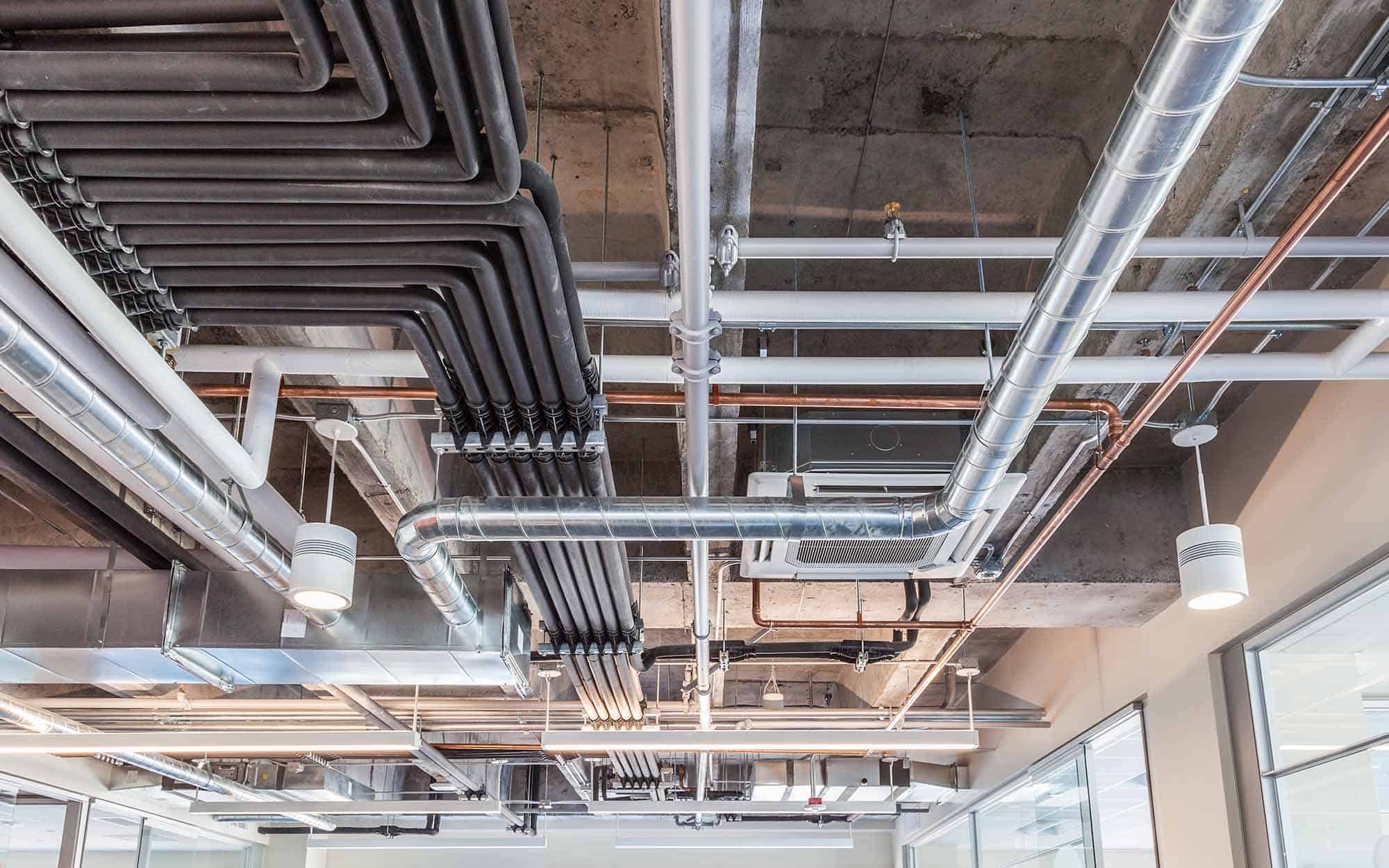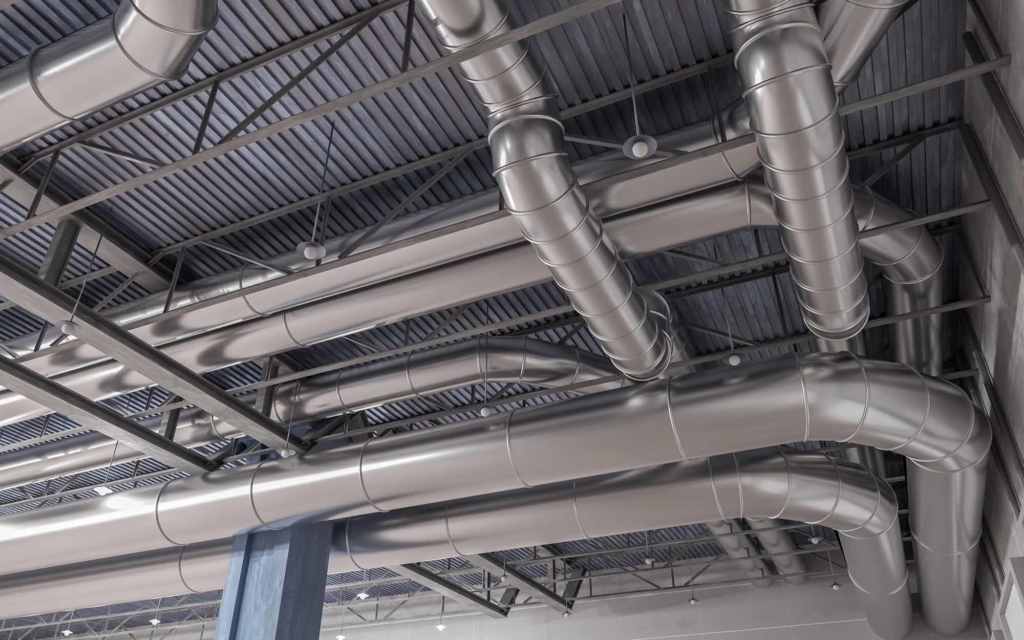
Most businesses lose 25% of the air produced by their HVAC due to poorly fitted ducts, which translates into thousands of wasted dollars annually. Luckily, investing in ductwork replacement can help improve your system’s efficiency. Continue reading to discover:
- The importance of good ductwork
- Signs it’s time for ductwork replacement
- How to extend your ductwork’s lifespan
- Answers to common ductwork questions
Six Standard Commercial HVAC Issues
Below are the six most common HVAC problems commercial buildings in the Tri-State area experience:
Why Is Ductwork So Important?
While often overlooked, ductwork plays a key role in your HVAC performance. Your ducts pull air from various parts of your facility—heating, cooling, and dispersing it to other areas of your building.
On average, ducts are designed to last anywhere from 10 to 15 years. After a decade or so, they start to experience wear and tear. And The sooner you identify signs of damage, the quicker you can act on it.
Five Indicators You Need Ductwork Replacement
Look out for the following factors to determine if your ducts need some attention.
Noisy HVAC
HVAC systems should make noise, but they shouldn’t be abnormally loud. If you notice your HVAC is making annoying sounds, it’s time to inspect the ductwork. The ducts in your house are connected with plastic or fiberglass joints. With time, these joints sustain damage, causing rattling sounds. Additionally, if there are holes in your ductwork, you’ll hear loud whistling noises when air circulates through your building.
Increased Energy Bills
If you notice your energy bill steadily increasing month-to-month, that’s usually a sign your HVAC system is working too hard. Faulty ducts contribute to poor energy efficiency. There are a few different reasons why this could be happening in your facility, such as:
- Leaks caused by holes or cracks in the ducts
- Broken segments
- Excess dirt and debris
Uneven Heating or Cooling
If you notice multiple areas in your building have different temperatures, this can signify ductwork problems. Leaks within your ducts can cause inconsistent airflow, which means some rooms in your facility receive more air than others. You can easily verify this discrepancy using an indoor thermometer; if the climate differences are off the scale, you need to invest in ductwork replacement as soon as possible. The climate should stay relatively consistent even with small gaps in your duct. Noticeable temperature differences mean your system has larger underlying issues that need to be addressed.
Poor Air Quality
If your ductwork has gaps, any dirt surrounding the holes could end up in your air. Poor indoor air quality (IAQ) can lead to several complications for your employees, including:
- Respiratory problems
- Allergies
- Germ transmission
- Inhaling dust and dirt
To keep your building safe, start your ductwork replacement project as soon as you notice symptoms of poor IAQ.
Debris Around Vents
Vents are designed to push air throughout your building. However, if your air is too dirty, debris begins to accumulate around the opening of your vents. This sign takes a while to develop, as you likely won’t notice anything until the later stages. The debris that collects is a combination of:
- Dust
- Dirt
- Lint
- Hair
- Insects
If you notice the outside of your vents are coated in debris, that’s a telltale sign it’s time for ductwork replacement.
It’s important to note every ductwork issue doesn’t require a full replacement. For minor problems, there are a few preventative measures you can take to keep your system in good shape.
How To Extend Your Ductwork’s Lifespan
If your ductwork is free from major complications, but you still want to get the most out of your system, these three actions can extend your lifespan:
- Seal Your Ducts
Sealing your ducts is a great way to prevent dust from entering your infrastructure, keeping your air quality pure and system efficient.
2. Insulate Your Ducts
Insulating your ductwork is an effective way to remediate damages, as
duct insulation traps air and assists with temperature control.
3.Clean Your Ducts
Regularly cleaning your ducts removes any dirt and dust from your system, increasing its performance and lifespan. If you’re experiencing signs of ductwork issues but don’t want to go through the hassle of replacement, reach out to HVAC professionals and schedule routine cleaning to keep things in working order
Navigating ductwork issues is challenging for the untrained eye. Luckily, we’ve compiled a list of FAQ’s to help ease your concerns.
Frequently Asked Ductwork Questions
It’s normal to be confused when evaluating ductwork replacement. Take a look at some common questions to receive some clarity on the process.
Should I Clean or Replace My Ductwork?
Determining whether you require ductwork replacement or cleaning is based on the age of your system. Generally speaking, replacements are best for systems 12 to 15 years old. Cleaning older systems is a temporary solution; at some point, it’s best to invest in a full replacement to avoid burning money on superficial maintenance.
What Are Some Signs of Bad Ductwork?
While we went in-depth over a few signs of bad ductwork, here’s a complete list for your convenience:
- Poor airflow
- Inconsistent HVAC performance
- Whistling noises
- Rattling sounds
- Moldy smells
- Poor air quality
- Dust around vents
- Respiratory issues
- Sneezing, coughing, dry eyes
- Increased energy consumption
Any one of these signs can indicate you have duct issues. If you suspect problems, reach out to your local HVAC provider for a free inspection.
When Should You Replace AC Ductwork?
Knowing when it’s time to replace your ductwork is based on two factors:
1) Problems You Experience
If you’re noticing ductwork issues, it’s time to evaluate your options. Schedule an inspection, and a professional provider will assess your system to see where it’s falling short. They’ll either recommend:
- Simple repairs
- Routine cleaning
- Full replacement
Knowing what service you require is unique to your building needs, which is why you need an expert opinion to accurately assess your ductwork’s performance.
2) Age of Your System
The older your system gets, the fewer maintenance avenues you have. Most ducts have a maximum lifespan of 20-25 years. However, they begin to degrade after 15 years. If your system falls in this age bracket, it’s time for a replacement.
How Do I Replace My Ductwork?
You’ll need professionals to help to replace your ductwork. Shop around for local HVAC providers, and see what services they offer. If possible, find a mechanical contractor experienced in sheet metal fabrication, as they make the installation process more manageable.
The Tri-State Area’s Top Choice for Ductwork Replacement
For over 37 years, REACT Industries has delivered high-quality HVAC services to businesses across the New York metropolitan area. As a full-service mechanical contractor, we offer retrofitting, sheet metal fabrication, ductwork replacement, and more. Reach out to our experts and discover the difference that comes with a trusted provider.
